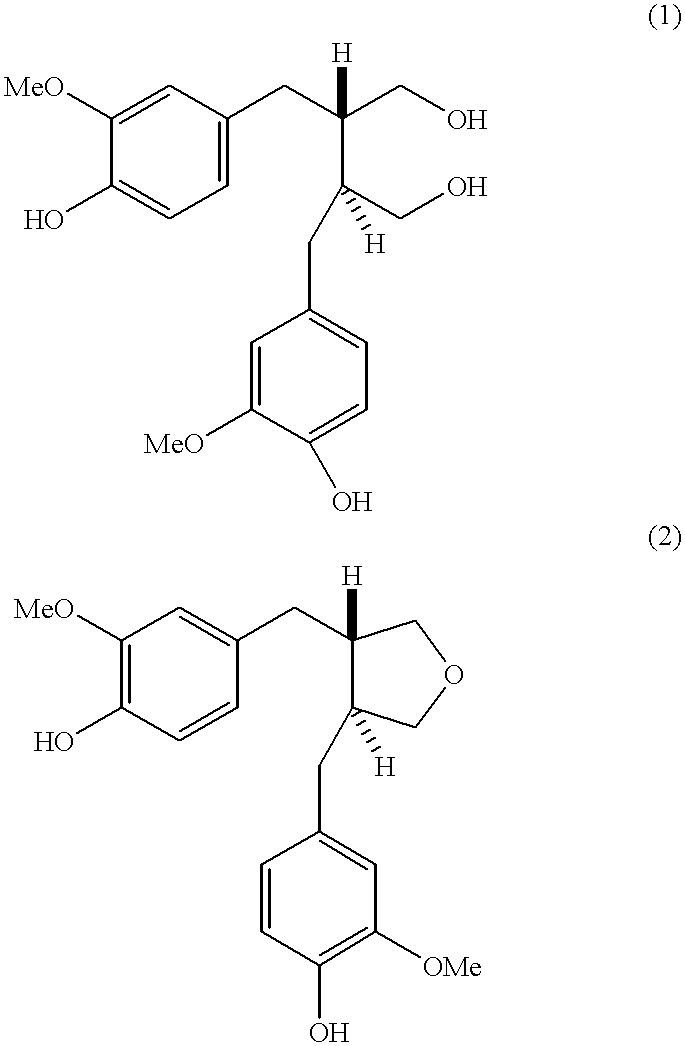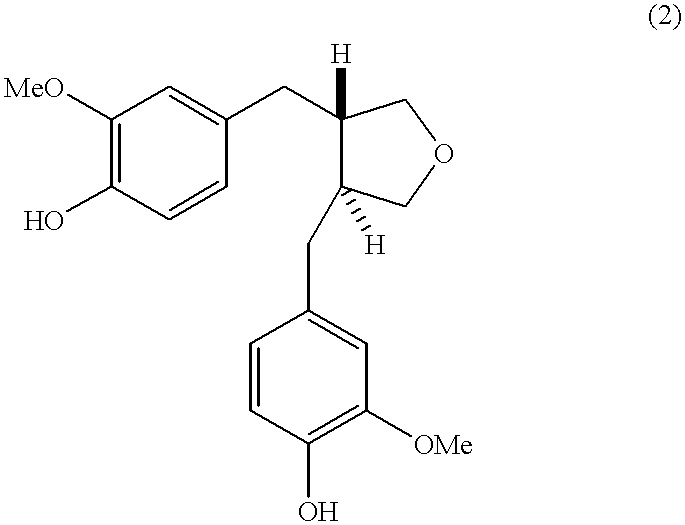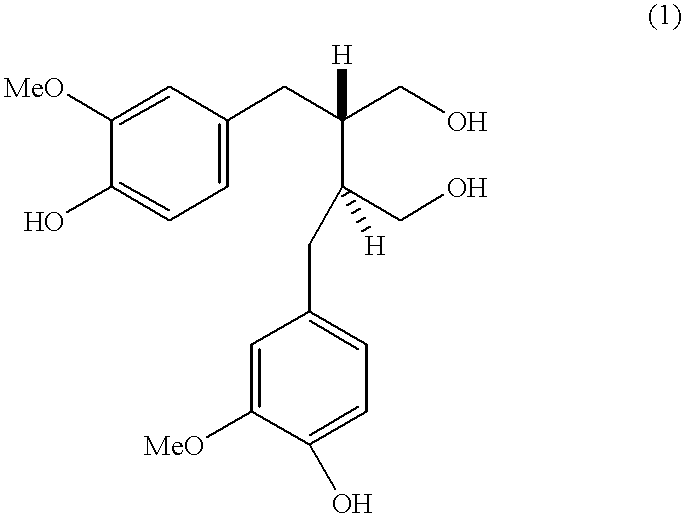Process for the production of (-) 3,4-divanillyl tetrahydrofuran
a technology of tetrahydrofuran and tetrahydrofuran, which is applied in the field of process for the production of (-) 3, 4divanillyl tetrahydrofuran, can solve the problems of high cost, time-consuming and laborious process, and the formation of epoxide of formula (2) is unstable in acidic solution, and achieves high yield
- Summary
- Abstract
- Description
- Claims
- Application Information
AI Technical Summary
Benefits of technology
Problems solved by technology
Method used
Image
Examples
example ii
Production of (-) Secoisolariciresinol From Roots
Air dried, pulverized roots (1 kg) were extracted and processed as per process given in example I to give (-) secoisolariciresinol m.p. 112-113.degree. C., [.alpha.].sub.D -25.degree. (Cl, MeOH), yield 2.01 g.
example iii
Production of (-) Secoisolariciresinol From Heartwood
Air dried pulverized heartwood (1 kg) of T. wallichiana were extracted with EtOH (5 lit.times.3) at ambient temperature for three days. EtOH extract was concentrated to a residue and the residue was treated with water (2 liter) and extracted with CH.sub.2 Cl.sub.2 (3 lit.times.3) exhaustively. The CH.sub.2 Cl.sub.2 extract was concentrated under vacuum and the residue thus obtained was dissolved in 1N KOH solution (1 lit) with stirring and extracted with CH.sub.2 Cl.sub.2 (1 lit.times.3). The aqueous KOH layer was neutralized with 1N H.sub.2 SO.sub.4 and extracted with CHCl.sub.3, (2 lit.times.3). CHCl.sub.3 layer was washed with water, dried over anhydrous sodium sulphate and concentrated to give a residue which crystallized out and filtered. It was recrystallized from a mixture of acetone-hexane to give (-) secoisolariciresinol (2 g) mp. 112-113.degree. C., [.alpha.].sub.D -25.degree. (Cl, MeOH).
example iv
Production of (-) Secoisolariciresinol From Roots
Air dried, pulverized roots (1 kg) were extracted and processed as per process given in example III to give (-) secoisolariciresinol, mp. 112-113.degree. C., [.alpha.].sub.D -25.degree. (Cl, MeOH), yield (2.01 g).
PUM
 Login to View More
Login to View More Abstract
Description
Claims
Application Information
 Login to View More
Login to View More - R&D
- Intellectual Property
- Life Sciences
- Materials
- Tech Scout
- Unparalleled Data Quality
- Higher Quality Content
- 60% Fewer Hallucinations
Browse by: Latest US Patents, China's latest patents, Technical Efficacy Thesaurus, Application Domain, Technology Topic, Popular Technical Reports.
© 2025 PatSnap. All rights reserved.Legal|Privacy policy|Modern Slavery Act Transparency Statement|Sitemap|About US| Contact US: help@patsnap.com



